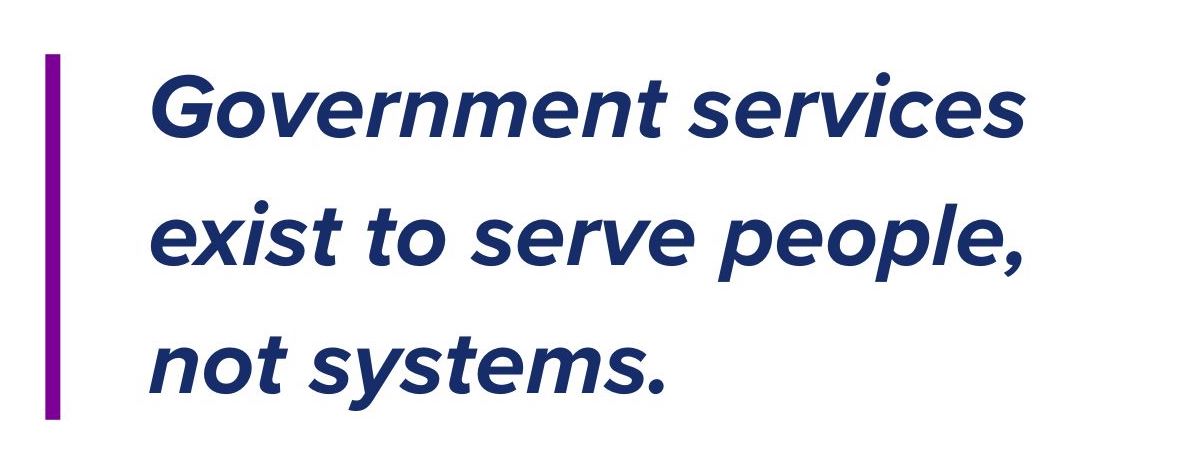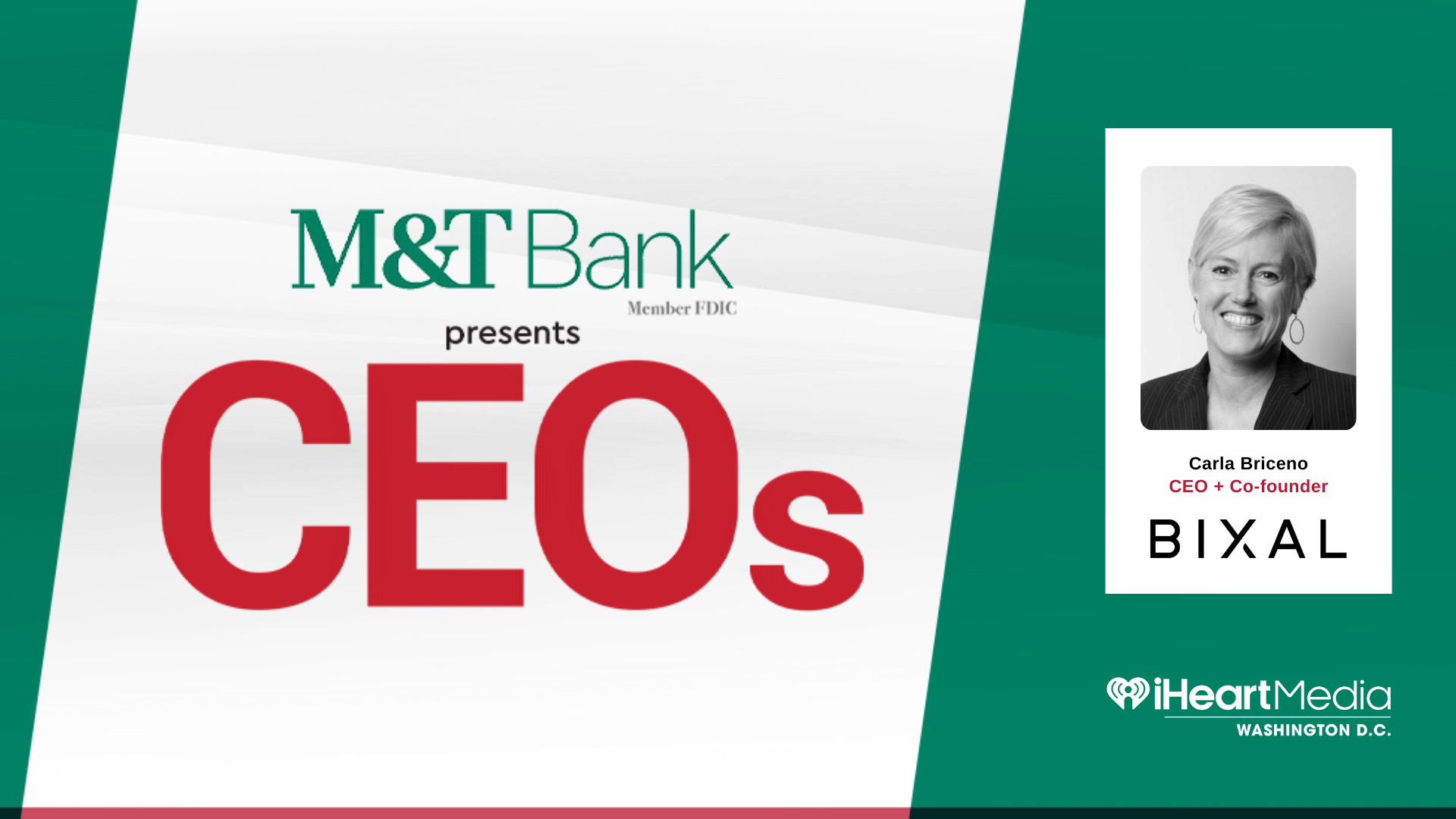Blog and News
Leading Through a New Government Contracting Era: A CEO’s Perspective on What This Moment Demands

If the first half of 2025 has made anything clear, it’s this: government contracting is no longer just about delivering scope. It’s about leading through complexity, responding with urgency, and showing up with empathy while delivering quantifiable results—faster.
Across the federal landscape, agencies are under immense pressure and grappling with shifting mandates, urgent modernization demands, workforce disruption, and evolving public expectations. And they’re being asked to deliver bold change with leaner resources, tighter timelines, and greater scrutiny.
As a leader in this space, I’ve spent the last six months listening closely to our clients, partners, and teams. What I see is a federal workforce that’s resilient, mission-driven, and committed, but it is also fatigued by a system that hasn’t caught up to the moment.
This isn’t the time for business as usual. It’s time to lead differently: faster, smarter, and with clarity of purpose.
What This New Era Demands of Government Contracting
Bixal works closely with agencies across the federal government, and what we’re seeing is a collective shift in expectations. The scale and complexity of the challenges are undeniable, but so is the opportunity to meet them head-on.
Below are three core shifts we are seeing across the federal contracting industry:
Adjusting to a New Operating Reality
Agencies are being asked to keep up with an unprecedented pace of change. The environment is in constant motion: Executive orders, funding shifts, new policies, and workforce restructuring.
Yet many systems, procurement pathways, and support structures were not designed for this level of agility. Teams are navigating evolving expectations with tools and timelines built for another era.
Doing More with Less
Agencies are facing growing demands to modernize quickly, but the resources aren’t keeping up. Teams are asked to deliver bold outcomes with shrinking budgets, leaner staffing, and limited technical infrastructure.
The result is mounting operational strain and competing priorities that make it difficult to implement and sustain meaningful improvements.
Rebuilding Public Trust in Government Services
Public trust in the federal government remains near historic lows with only 21% of Americans saying they trust the government to do what is right “most of the time” [Pew Research, 2024].
For agencies, this adds another layer of complexity: it’s not just about service delivery, but how the public experiences those services.
Many people interact with government services that feel confusing, inconsistent, or not aligned with their needs. And that fuels broader skepticism, even when government employees and contractors are doing good work behind the scenes.

Rethinking Government Contracting
The challenges federal agencies face are too complex for business as usual. If government contracting is to meet this moment, we—contractors, partners, agencies—must evolve together.
Here’s what we at Bixal believe this means for the field:
1. Deliver Impact Early and Then Build On It
Big, slow initiatives often stall progress. When solutions take years to reach the people they’re intended to serve, teams lose momentum while users grow increasingly frustrated and disengaged.
That’s why Bixal advocates for a different rhythm: deliver early, fix fast, and keep improving.
This means working smarter by building clear, practical solutions, validating quickly, and earning confidence through action. Here are some things that can help deliver effective impacts:
- Start with a pilot that solves a specific need so that agencies can test the solution in real-world conditions and build momentum from early wins.
- Iterate quickly by gathering feedback, addressing pain points as they emerge, and improving over time instead of waiting for a perfect end state.
- Sequence efforts to show impact early while building the foundations needed for long-term scalability and sustainability.
- Track tangible outcomes throughout the process to keep teams aligned and ensure improvements are grounded in evidence, not assumption.
2. Center the People, Not Just Platforms
 Government services exist to serve people, not systems.
Government services exist to serve people, not systems.
Too often, tech is delivered without paying attention to the people who use it every day: employees, service reps, and the public.
The true power of government contracting lies in delivering solutions that are not only technically sound but human centered from day one.
Here’s what that looks like:
- Build services with the users, not just for them. Involve public servants, caseworkers, and constituents early in the process to ground solutions in real workflows, challenges, and priorities.
- Pair every system with clear, strategic content. Interfaces and workflows are only as effective as the content that powers them. That means using plain language, smart information architecture, and messaging that aligns with how people seek help or take action.
- Create consistent feedback mechanisms like user testing, frontline input, and service analytics to continuously refine and improve. We can’t wait anymore until delivery to learn what’s working; we need to use real data and user insight to adapt as we go.
3. Make Emerging Tech and Artificial Intelligence (AI) Practical
AI, automation, and other advanced technologies offer real promise for federal agencies, but many teams are still navigating how to integrate them into legacy systems, align them with mission objectives, and ensure they support day-to-day operations.
That’s why our role as government contractors must go beyond evangelizing tools. We need to help agencies deploy emerging tech and AI in a way that is realistic, responsible, and results driven:
- Work closely with agencies to identify where AI and automation can streamline processes, such as summarizing large volumes of data, automating intake forms, or handling routine service requests, allowing employees to focus on higher-value tasks.
- Before introducing new technologies, assess whether the tool addresses a real operational challenge and whether the agency has the infrastructure and capacity to adopt it effectively.
- Help agencies build from what already works: extending existing platforms, integrating familiar systems, and layering in innovation where it has the clearest impact.
- Connect every technology investment to measurable outcomes, whether that’s reducing response times, improving user satisfaction, or supporting internal efficiency.
4. Rebuild Trust Through Transparency and Outcomes
Trust in government isn’t restored through sweeping promises: It’s built (or lost) in everyday interactions. When people encounter clunky websites, unclear guidance, or services that don’t meet their needs, confidence erodes.
Trust must be rebuilt through small, everyday wins: services that work, communications that are clear, and a sense that government is responsive and accountable. Build trust by:
- Accelerating delivery cycles by supporting agencies with agile teams and iterative workflows that make improvements visible to users in weeks or months—not years.
- Designing with clarity and users in mind, ensuring that digital platforms, content, and AI-powered tools are intuitive and useful to end users.
- Improving task completion rates by helping agencies restructure digital services around user behavior, streamlining navigation, and implementing features like effective search, all of which make it easier for people to find and complete what they came for.
- Making performance visible by building tools and templates that allow agencies to share progress transparently through dashboards, metrics, and consistent public communication.
Let’s Lead What’s Next, Together
Agencies don’t need more noise. They need focused, capable allies who understand the stakes and move with purpose.
At Bixal, we’re not just delivering platforms or products. We’re helping our clients deliver on their mission with the tools, content, and strategies to serve the public better, faster, and more transparently.
As we head into the second half of 2025, we’re energized by what’s possible and clear about what’s required.
Now is the time to move fast—but not blindly. To bring clarity to complexity. To build trust through action. And to show what’s possible when the government and its partners lead together.
See how we’re helping agencies lead through change—and connect with us via the form below to build what’s next.
Want to learn more? Listen to Carla’s conversation on iHeartRadio's “CEOs You Should Know”, where she reflects on leadership, public service, and what it takes to modernize the government while keeping people at the center.
